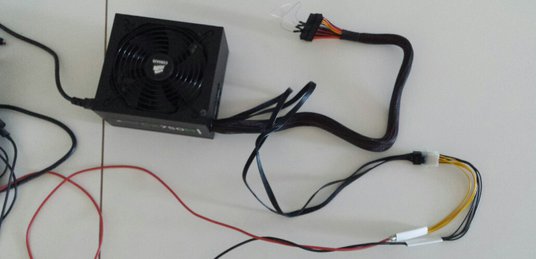Raspberry Fly
A Raspberry Pi based autonomous aerial drone
Power Supply
No power makes for a very dull drone! In fact drones love power. That's why they are usually powered by a Lithium Polymer (LiPo) battery. LiPo batteries are rechargeable and capable of storing large amounts of power in a small light package. They are also capable of delivering that power quickly in high demand situations like keeping a drone airborne. They are actually so good at what they do that they have made electric flight just as viable as old-school fuel powered flight (well at least for drones and the like). However as mentioned in the safety section they do have a tendency to start explosive fires if treated incorrectly or damaged so read up on LiPo safety before buying and using them!
LiPo batteries come in various configurations with 1 or more cells. Each cell is rated at 3.7V and multiple cells are connected in series. That means a 2-cell battery is rated as 7.4V, a 3-cell battery at 11.1V and so on. They are often labelled with the number of cells post fixed with a S. That would make a 3-cell LiPo battery a 3S battery. The DJI ESC's on the Raspberry Fly are rated as 3S and 4S compatible.
Currently I don't have any good storage options for LiPo's so until I do outside testing at "high altitude" (> 1 meter) I have decided to use a PC power supply to power the Raspberry Fly. In theory all 3 motors going at full power could use up to 120A (!). However the Raspberry Fly will get nowhere near this especially during testing, so I settled on a Corsair CX750M power supply rated at a 62A max on the 12V rail. Plenty for my testing needs.

In order to get power from it I had to short the "Power on" and "Power Good" wire on the power supplies 24 pin connector. Do NOT attempt anything like it unless you know what you are doing and even then it's at your own risk!
I then bought an adapter for the 12V connecter with 4 yellow (12v) and 4 black (ground) wires and spliced them to two thicker wires for 12v (red) and ground (black). The red and black wires supply the power to the Raspberry Fly. At the Raspberry Fly a cheap LM2596 DC-DC switching regulator is connected to the 12V and converts it to 5V for powering the Raspberry Pi. That way only one power source is needed supplying both 12V for the actual flight and 5V for the flight controller. Unfortunately the LM2596 isn't quite good enough at delivering noise free power for the Raspberry Pi when the motors powers up to more than about 30%. That results in sudden reboots of the Raspberry Pi. I will try to add some capacitors to smooth out the 5V supply.
Drones are fun but can be dangerous. Use any information on these pages at your own risk